Rob Bignell's Blog, page 372
May 15, 2013
Novelists must create ‘fictional dream’
When writing 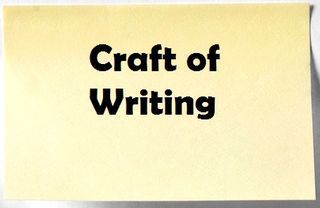 any story, your goal ought to be to create and maintain a fictional dream, or an “illusion that there is no filter between reader and events that the reader is actually experiencing what he is reading,” as the Science Fiction and Fantasy Writers of America, Inc. defines it.
any story, your goal ought to be to create and maintain a fictional dream, or an “illusion that there is no filter between reader and events that the reader is actually experiencing what he is reading,” as the Science Fiction and Fantasy Writers of America, Inc. defines it.
For the reader, one of the joys of literature is to be immersed in the fictional dream. As a writer, there may be no greater disservice to your reader than to break this illusion. As science fiction author and editor Stanley Schmidt once wrote, “Your job as a writer is to make your reader forget that he or she is reading …”
The stronger the fictional dream, the more immediate the story and its characters are to the reader. The payoff for the author is that his story’s message will stick longer with the reader – never mind that the author’s stature (and sales) correspondingly will rise.
Readers pick up a novel or turn to a short story in a magazine ready to enter a fictional dream. Like a football team that can score at will over an opponent, the author gives away the victory when he repeatedly fumbles.
To maintain the fictional dream, avoid committing these errors when writing:
n Pointless digressions - The reader expects that every sentence will move the story forward. Taking a side trip that serves no purpose in the tale delays this forward momentum, which should only increase until the story reaches its climax.
n Expository lumps - Explanations of procedures, how devices operate and future history often run too long and again break the story’s forward momentum. The best way to explain something is to show it in action and have characters give brief, partial hints so readers through their own thinking can figure out it out for themselves.
n Lists - Even worse than a lump is a list. The items in the list usually are superfluous to the story. If they aren’t, then their importance ought to be incorporated into the action.
n Turgid prose - Bombastic or pompous phrasing sounds unnatural. Authors should write as if holding a conversation with the reader, not lecturing and talking down to him.
n Unrealistic characters - If a character appears false, then the reader won’t identify with him or will find his actions unbelievable. Premise with holes in it – Stories make arguments and draw conclusions. If the argument is satisfactorily supported or steps skipped to reach a conclusion, the reader will questions about the story rather than enjoy it.
n Shifts in viewpoint - Changing the perspective from which a story is told can be jarring to the reader.
n Telling rather than showing - By telling what happens, as if giving stage directions, the reader is distanced from the action and the characters.
Need an editor? Having your book, business document or academic paper proofread or edited before submitting it can prove invaluable. In an economic climate where you face heavy competition, your writing needs a second eye to give you the edge. I can provide that second eye.
Related articles
 Avoid giving readers a big info dump
Avoid giving readers a big info dump Select a viewpoint that gives you flexibility
Select a viewpoint that gives you flexibility Place Easter egg to reward careful readers
Place Easter egg to reward careful readers Avoid 'As you know' Syndrome in fiction
Avoid 'As you know' Syndrome in fiction Don't burden us with a self-indulgent digression
Don't burden us with a self-indulgent digression
May 14, 2013
Place Easter egg to reward careful readers
Sometimes the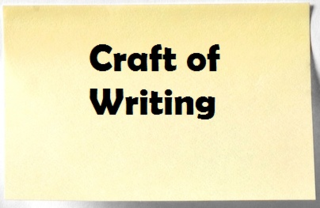 real pleasure of writing – and reading - isn’t about a well-crafted tale with a fast-moving plot involving intriguing characters set in a well-described landscape. After all, penning such a story entails a lot of sweat, and for readers, they expect nothing less than a well-developed piece. Instead, the real smile comes when the author leaves a special treats for the reader, such as hiding some surprise not germane to the story. These surprises are called “Easter eggs”, a term science fiction writing workshops have borrowed from the jargon of computer programming.
real pleasure of writing – and reading - isn’t about a well-crafted tale with a fast-moving plot involving intriguing characters set in a well-described landscape. After all, penning such a story entails a lot of sweat, and for readers, they expect nothing less than a well-developed piece. Instead, the real smile comes when the author leaves a special treats for the reader, such as hiding some surprise not germane to the story. These surprises are called “Easter eggs”, a term science fiction writing workshops have borrowed from the jargon of computer programming.
For example, an author might encode, with the first letters of consecutive sentences, some message to the reader. In other instances, the author may use obscure allusions, such as what James Lecky does in his recently published “The Season Without Sun”. In the Lecky’s story, the antagonists are a people called the “Dajzyn” - the Tuva word for “enemy.” Tuva is a Russian republic on the central steppes of Asia, which one theory posits is where homo sapiens came from when moving into Ice Age Europe, the apparent setting of this story.
The pleasure for the author is akin to being part of an inside joke. The pleasure for the reader comes in possessing a deeper understanding of the piece – or at least in knowing that he’s one of the few who got the inside joke! It strengthens the bond between writer and reader.
If placing an Easter egg into your story, remember that it usually is hidden deep within the text. It shouldn’t disrupt the narrative’s flow. After all, the Easter egg often is superfluous to the story. In addition, don’t sacrifice time crafting and polishing the story to hide an Easter egg. The reason a reader opts to look at your story is to enjoy a quality tale. The Easter egg is just a fun surprise.
Need an editor? Having your book, business document or academic paper proofread or edited before submitting it can prove invaluable. In an economic climate where you face heavy competition, your writing needs a second eye to give you the edge. I can provide that second eye.
Related articles
 Editor's marketing book garners positive reviews
Editor's marketing book garners positive reviews
May 13, 2013
Utilize Chekhov’s gun to make plot work
You’ve probably  read at least one story in which upon reading their climax in which the hero uses some object to help him achieve victory, thought to yourself, “How convenient that it was there!” If the object in question wasn’t mentioned – even in passing so that it did not distract you from the tale – you feel cheated as a reader.
read at least one story in which upon reading their climax in which the hero uses some object to help him achieve victory, thought to yourself, “How convenient that it was there!” If the object in question wasn’t mentioned – even in passing so that it did not distract you from the tale – you feel cheated as a reader.
Mentioning early in a story some object – or even a character, prize or challenge – that later helps the main character resolve his central problem is a ploy known as “Chekhov’s gun”. It comes from playwright Anton Chekhov’s advice that if you put a gun on the in Act I, you must use it by Act III. Otherwise, the gun is just a distraction that is out of place.
Of course, if your story is a murder mystery, such distractions are necessary to the plot and enjoyment of the story. Like a labyrinth, a mystery’s plot must contain wrong turns and dead ends for the main character.
But in tales that aren’t murder mysteries or detective stories, forcing the reader to invest time in an object or character that doesn’t offer some plot payoff later in the tale is downright annoying, not to mention poor craftsmanship.
Using Chekhov’s gun also avoids the inconvenient plot problem of a deus ex machine – an improbable contrivance that allows the central problem to be solved.
H.G. Wells uses such a strategy in “The War of the Worlds”. In the novel’s opening lines, he writes:
No one would have believed in the last years of the nineteenth century that this world was being watched keenly and closely by intelligences greater than man’s and yet as mortal as his own; that as men busied themselves about their various concerns they were scrutinised and studied, perhaps almost as narrowly as a man with a microscope might scrutinise the transient creatures that swarm and multiply in a drop of water. With infinite complacency men went to and fro over this globe about their little affairs, serene in their assurance of their empire over matter. It is possible that the infusoria under the microscope do the same.
Bacteria seen under a microscope aren’t mentioned again in the novel until the story’s climax: As humanity appears doomed to defeat, bacteria infects and kills the Martian invaders, saving us from extinction.
Need an editor? Having your book, business document or academic paper proofread or edited before submitting it can prove invaluable. In an economic climate where you face heavy competition, your writing needs a second eye to give you the edge. I can provide that second eye.
Related articles
 Unfold action to develop a stronger story
Unfold action to develop a stronger story Create a riveting opener for your story
Create a riveting opener for your story
May 12, 2013
Don’t rely on inspiration to carry your story
Most published  writers agree that inspiration is overrated. After all, inspiration can generate a story idea or a character or even a scene, but it rarely generates a whole story.
writers agree that inspiration is overrated. After all, inspiration can generate a story idea or a character or even a scene, but it rarely generates a whole story.
Once a story idea has sprung from your head, you must grow and nurture it. This typically means outlining it.
Some writers prefer to just get words on a page rather than outlining. That may work for some, but for most of us, it’ll result in a disjointed story that’s missing elements. It’s certainly imperative for a novel and definitely a good idea for a short story.
An outline forces you to think deeply about your story in advance of writing it. Rather than penning passages that must be tossed because they don’t fit well into the final story, you can get that first draft closer to publishable form by working out exactly what you want to write. You can ensure the plot will flow logically from opening line through climax, can sketch out characters so that you know them better, can settle on the best point of view all in advance of writing that first line.
In many ways, the outline is like an instruction book for your story. It helps you feed the story with just the right nutrients and to ensure it receives the correct amount of sunlight. You know what you’re aiming for even before you sit down at the keyboard.
As with anything, a writer can misuse the outline by overrelying on it. Just because your outline says to write something doesn’t mean you have to, especially if it will result in a week story. Once you start drafting the story (the next step in the writing process), always remain flexible by considering the possibility that your outline contains flaws. After all, as you continue to think about your story, you may come up with better ideas than when you were outlining.
A side note: There’s no right or wrong way to outline. You can use 3x5 note cards. You can write a complex beat-by-beat or even line-by-line plan. You can make a quick flow chart. Do whatever helps you best organize your thoughts.
Need an editor? Having your book, business document or academic paper proofread or edited before submitting it can prove invaluable. In an economic climate where you face heavy competition, your writing needs a second eye to give you the edge. I can provide that second eye.
Related articles
 Self-discipline to write a daily a must
Self-discipline to write a daily a must The 'thinking step' when writing your book
The 'thinking step' when writing your book How to write a novel synopsis for a lit agent
How to write a novel synopsis for a lit agent
May 11, 2013
Self-discipline to write a daily a must
All too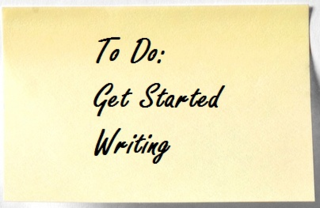 often as writers we wait for “inspiration” to strike. Certainly it does flash, and when it does, the story almost always is a great idea. The problem, however, is in seeing that idea through to its completion, which is a story in a magazine or a novel on the shelf.
often as writers we wait for “inspiration” to strike. Certainly it does flash, and when it does, the story almost always is a great idea. The problem, however, is in seeing that idea through to its completion, which is a story in a magazine or a novel on the shelf.
To get there, you’ll need some good writing habits.
The good news is that there’s really only one good writing habit: You must write constantly.
Having a good idea means little if you don’t follow through with the writing, after all. But even more importantly, the quality of this writing during the follow-through will be poor if you have not developed the skills and acumen that come with regular writing. Think of it this way: You can’t run a marathon without doing lots of small, conditioning runs.
So how do you develop the self-discipline to write?
g Write daily – Somehow you must set aside at least a half-hour but preferably an hour or longer, to do nothing but write. Don’t worry about the quality; it will vary from day to day, but ultimately over time it will improve.
g Warm up – Many writers start their writing session start by reading or revising the previous day’s work, a sort of warm-up, and then picking up from there. This also helps ensure consistency in the story if the focus of your writing is a longer work, such as a novel.
g Work from an outline – Some writers develop outlines that are so detailed that writing the notes in a complete sentence is all that’s left to put the story in written form. Of course, others prefer to write with no outline or notes, as if they are channeling their story but most writers are somewhere in between, sometimes planning out scenes beat by beat other times seized by inspiration and writing a whole scene on the blank page with preconceived notion in their heads. Regardless of your preferred style, the goal ought to be to do enough planning that eventually inspiration sizes you.
g Don’t edit – During your writing sessions, save hard-core editing and rewriting (as well as the chore of sending out manuscripts) for later. While you might start by reading the previous day’s writing, don’t get bogged down rewriting it. Just do some quick proofreading and move on.
You always should use a writing strategy that’s best for you, but always remember one thing: You MUST write. New copy must flow onto the paper or computer screen daily.
As science fiction writer Robert Silverberg wrote, “The process of becoming a writer involves discovering how to use the accumulated wisdom of our guild, all those tricks of the storytelling trade that have evolved around the campfire over the past five or ten or fifty thousand years. Others can show what those tricks are. But only you can make a writer out of yourself, by reading, by studying what you have read, and above all by writing.”
Need an editor? Having your book, business document or academic paper proofread or edited before submitting it can prove invaluable. In an economic climate where you face heavy competition, your writing needs a second eye to give you the edge. I can provide that second eye.
Related articles
 Five great quotes to inspire you to write
Five great quotes to inspire you to write Five quotations about writing as self-discovery
Five quotations about writing as self-discovery Five great quotations for aspiring writers
Five great quotations for aspiring writers Five Great Quotations for Aspiring Writers
Five Great Quotations for Aspiring Writers '7 Minutes a Day' now available in paperback!
'7 Minutes a Day' now available in paperback!
May 10, 2013
Editing client releases first novel, ‘Deadlight’
A long-time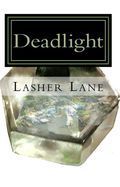 editing client of mine, Lasher Lane, has published her first novel. “Deadlight” tells the story of a young man who keeps encountering the ghost of a classmate who died after jumping from a bridge on a dare. And as with his deceased classmate, all of his friends metaphorically are disappearing, too, as they head off in their own directions – to college in the big city, to the California hippie scene, and to the war in Vietnam. Lasher has published a couple of short stories during the past year as a lead-up to her first book. “Deadlight” is available for sale online.
editing client of mine, Lasher Lane, has published her first novel. “Deadlight” tells the story of a young man who keeps encountering the ghost of a classmate who died after jumping from a bridge on a dare. And as with his deceased classmate, all of his friends metaphorically are disappearing, too, as they head off in their own directions – to college in the big city, to the California hippie scene, and to the war in Vietnam. Lasher has published a couple of short stories during the past year as a lead-up to her first book. “Deadlight” is available for sale online.
Need an editor? Having your book, business document or academic paper proofread or edited before submitting it can prove invaluable. In an economic climate where you face heavy competition, your writing needs a second eye to give you the edge. I can provide that second eye.
Related articles
 Editing client releases quest novel sequel
Editing client releases quest novel sequel Editing client releases three parts of ebook serial
Editing client releases three parts of ebook serial Editing client releases first novel, 'Dog Island'
Editing client releases first novel, 'Dog Island'
May 9, 2013
Hiking books now on sale in Stillwater, Minn.
Three of 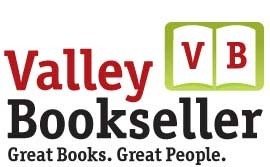 my hiking books are now available for purchase at Valley Bookseller in downtown Stillwater, Minn. Valley Bookseller is an independently owned and frequently hosts authors for book readings and signings. My three hiking books stocked there are: Hikes with Tykes: A Practical Guide to Day Hiking with Kids; Hikes with Tykes: Games and Activities; and my recently released Headin’ to the Cabin: Day Hiking Trails of Northwest Wisconsin. Valley Bookseller is located at 217 Main St N.
my hiking books are now available for purchase at Valley Bookseller in downtown Stillwater, Minn. Valley Bookseller is an independently owned and frequently hosts authors for book readings and signings. My three hiking books stocked there are: Hikes with Tykes: A Practical Guide to Day Hiking with Kids; Hikes with Tykes: Games and Activities; and my recently released Headin’ to the Cabin: Day Hiking Trails of Northwest Wisconsin. Valley Bookseller is located at 217 Main St N.
Need an editor? Having your book, business document or academic paper proofread or edited before submitting it can prove invaluable. In an economic climate where you face heavy competition, your writing needs a second eye to give you the edge. I can provide that second eye.
Related articles
 Book now at Bookends on Main in Menomonie
Book now at Bookends on Main in Menomonie Book now for sale at Volume One bookstore
Book now for sale at Volume One bookstore Book now for sale at Chapter 2 bookstore
Book now for sale at Chapter 2 bookstore Editor's latest hiking guidebook now out
Editor's latest hiking guidebook now out Editor releases first "Hittin' the Trail" guidebook
Editor releases first "Hittin' the Trail" guidebook
May 8, 2013
Getting to the core: Amid vs. amidst
Amid all of the confusing words in our language comes amid and amidst. Both mean the same thing: in the middle of or surrounded; for example, The downed pilot soon found himself in a rice paddy amid countless enemy soldiers, all looking for him.
of the confusing words in our language comes amid and amidst. Both mean the same thing: in the middle of or surrounded; for example, The downed pilot soon found himself in a rice paddy amid countless enemy soldiers, all looking for him.
Or should that be The downed pilot soon found himself in a rice paddy amidst countless enemy soldiers, all looking for him.?
Go with amid. Though amidst isn’t wrong, it’s a bit formal sounding, and for that reason most editors and writing instructors prefer amid. The Chicago Manual of Style, amid its many tips and rules, recommends using amid.
Need an editor? Having your book, business document or academic paper proofread or edited before submitting it can prove invaluable. In an economic climate where you face heavy competition, your writing needs a second eye to give you the edge. I can provide that second eye.
Related articles
 Don't lose sleep over this confusing comma rule
Don't lose sleep over this confusing comma rule When exposition is necessary in a story
When exposition is necessary in a story
May 7, 2013
Editing client releases three parts of ebook serial
A recent editing client of mine, BC Chrestians, has released the first three parts of his five-part science fiction serial ebook, “The Specials”. The series traces the story of the Specials, human beings who are born with a single super-human trait. Now one of the Specials, Chris Matan, must discover his own special ability and join with others of his kind to generate a synergistic power needed to defeat the evil Destroyer, whose actions threaten to annihilate not just the Specials but all of humanity. Part of the story is set in Danbury, Wis., and Plymouth, Minn. The ebook series is available for sale on Kindle.
editing client of mine, BC Chrestians, has released the first three parts of his five-part science fiction serial ebook, “The Specials”. The series traces the story of the Specials, human beings who are born with a single super-human trait. Now one of the Specials, Chris Matan, must discover his own special ability and join with others of his kind to generate a synergistic power needed to defeat the evil Destroyer, whose actions threaten to annihilate not just the Specials but all of humanity. Part of the story is set in Danbury, Wis., and Plymouth, Minn. The ebook series is available for sale on Kindle.
Need an editor? Having your book, business document or academic paper proofread or edited before submitting it can prove invaluable. In an economic climate where you face heavy competition, your writing needs a second eye to give you the edge. I can provide that second eye.
Related articles
 Editing client releases first children's book
Editing client releases first children's book Editing client releases first novel, 'Dog Island'
Editing client releases first novel, 'Dog Island' Updated version of 'Hikes with Tykes' released
Updated version of 'Hikes with Tykes' released Editing client releases quest novel sequel
Editing client releases quest novel sequel
May 6, 2013
How to write a novel synopsis for a lit agent
If you want  to sell your novel to a publisher or get a literary agent to represent it, you’ll ultimately need to write a synopsis, or a brief summary of what occurs in your story. It typically is sent by the author with a query letter; a literary agent who represents the book likely will use the synopsis to pitch your book to publishers.
to sell your novel to a publisher or get a literary agent to represent it, you’ll ultimately need to write a synopsis, or a brief summary of what occurs in your story. It typically is sent by the author with a query letter; a literary agent who represents the book likely will use the synopsis to pitch your book to publishers.
The attention you give to writing a synopsis arguably is more important than the attention you gave to writing your novel. After all, it’s what the literary agent and book publisher read to decide if they want to pick up your book. If they like the synopsis, then they’ll move on to reading the sample chapters you sent (or they’ll request them). Indeed, if your book is selected for publication, the art and marketing departments that write your cover blurbs likely will base it on your synopsis.
Always keep the synopsis short. It needs to be at least a single page but anything more than 1,000 words probably is too long. Having said that, some agents and publishers do ask for a longer synopsis, sometimes up to 10 pages; you should write your synopsis accordingly. Also, see if the agent or publisher has any requirements or preferences about the synopsis being single or double spaced; if uncertain, double space it.
As writing the synopsis, remember that its tone must be full of energy, as enthusiastic and exciting as a squad of cheerleaders that have successfully rallied the fans at a big game.
Begin by introducing the main character and his or her central problem – this after all, is at heart what the book is all about. Show how the main character’s motivations leave him in a crisis. Show how he is opposed in his quest to resolve this crisis, perhaps by the antagonist, perhaps by his own failings. Build the tension in this summary, just as you did in your novel. Do give away the ending; not telling it is a sign of an amateur.
Also, if you have a novel that is science fiction, fantasy, or an action/adventure thriller, be certain to mention any exotic locales where this action occurs.
Always write a synopsis in present tense – even if the novel is in past tense. For example, write “Thales desperately seeks to build a new weapon for his king” rather than “Thales desperately sought to build a new weapon for his king.”
In addition, type the character’s name in all capital letters the first (and only the first) time it is mentioned. To wit, it’s THALES the first time the name is used and Thales all times thereafter. Always refer to that character by using that name, and that name alone.
If the story is told from one of the character’s point of view, type (POV) after that character’s name the first time it is used. So, if the story were told from Thales’ point of view, the synopsis would read THALES (POV).
Finally, don’t write the synopsis until after the novel is completed. If you do, you’ll probably end up rewriting the synopsis. And don’t confuse this summary with the action outline, which is a synopsis of a book that’s not yet written. The action outline guides the writer as he pens the novel.
Need an editor? Having your book, business document or academic paper proofread or edited before submitting it can prove invaluable. In an economic climate where you face heavy competition, your writing needs a second eye to give you the edge. I can provide that second eye.
Related articles
 '7 Minutes a Day' now available in paperback!
'7 Minutes a Day' now available in paperback! Why writers need to carry business cards
Why writers need to carry business cards Market your book with a free unpublished story
Market your book with a free unpublished story



